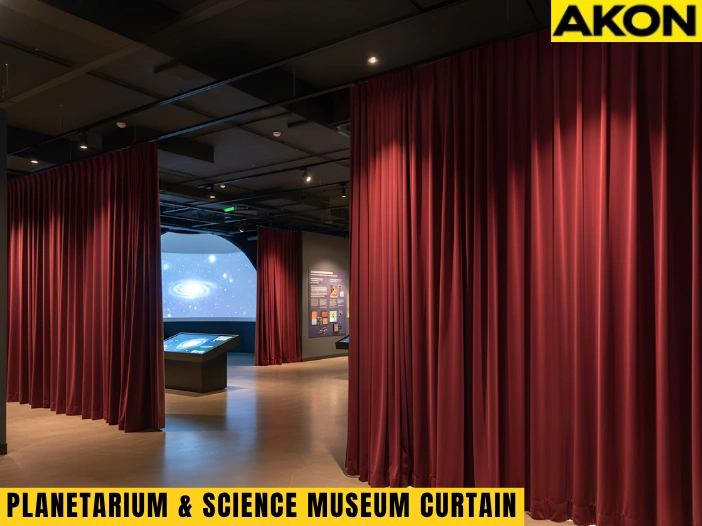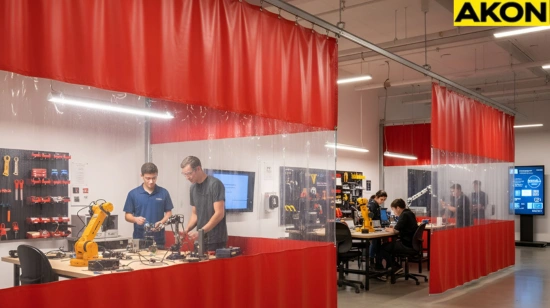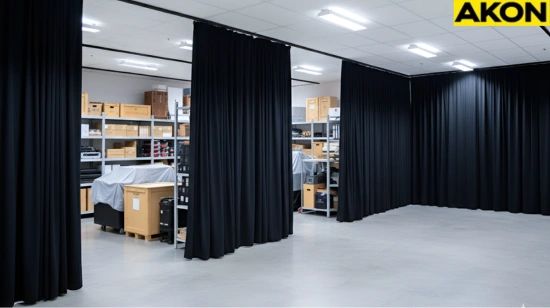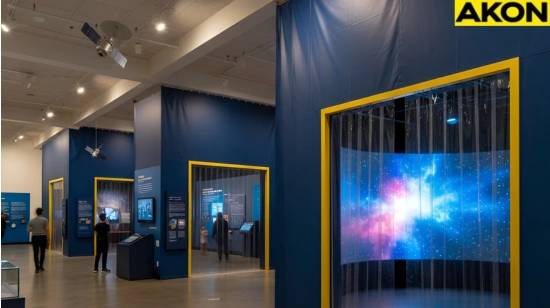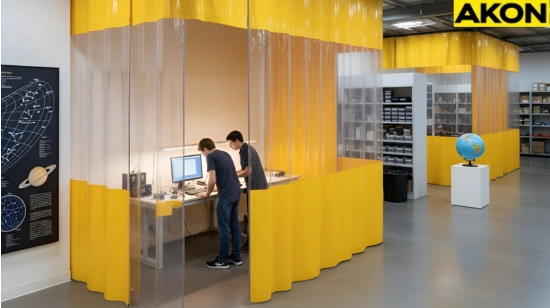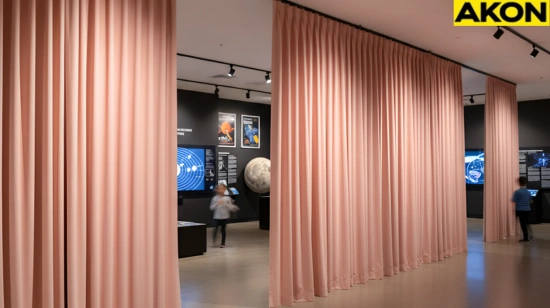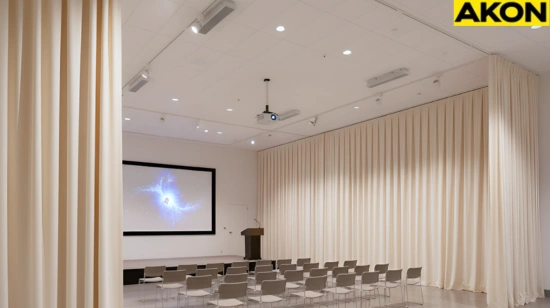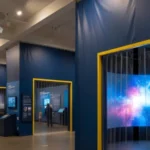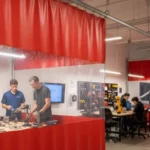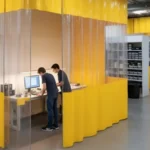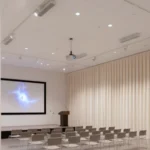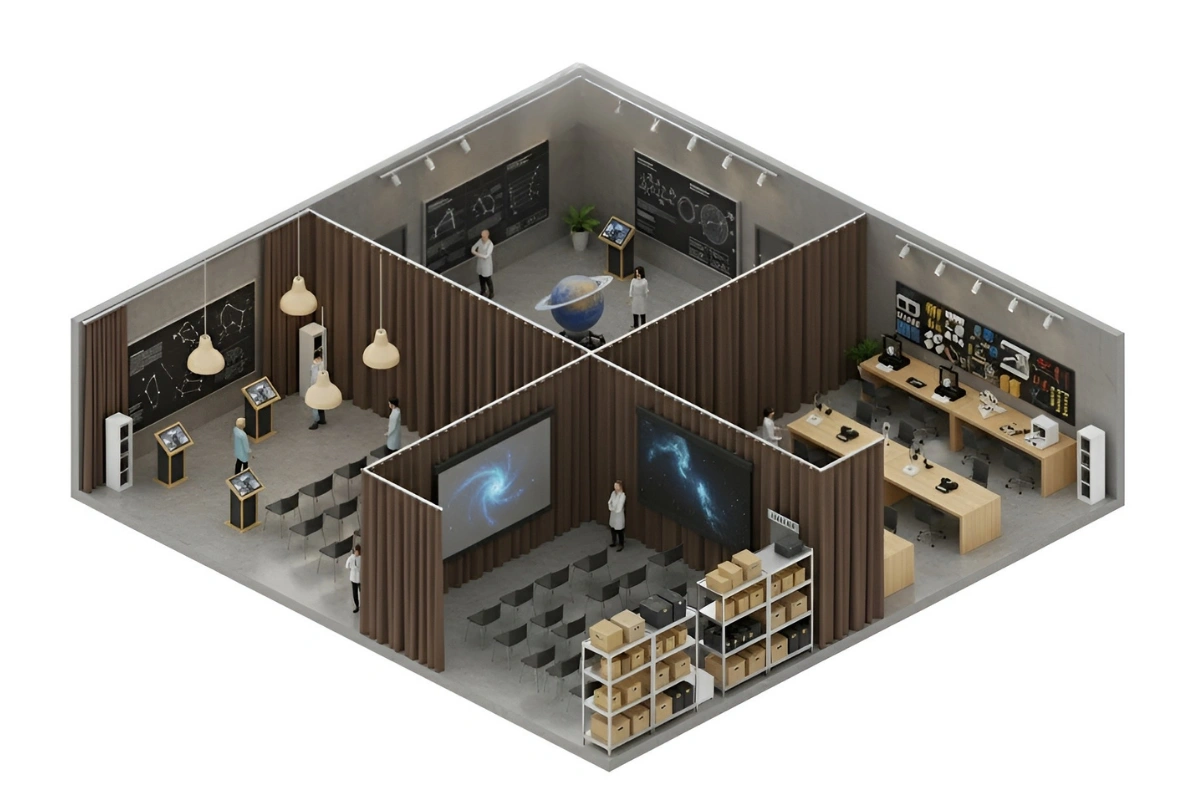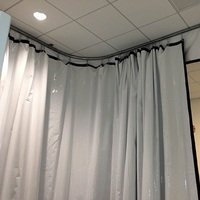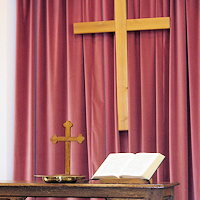Planetarium & Science Museum Curtains
Planetariums and science museums use curtain walls to manage light and sound with precision. This article explains how these flexible partitions work, their role in creating immersive exhibits, and the key curtain wall options that help public institutions improve light control, reduce noise, and adapt spaces efficiently.
What Curtain Walls Are and Why They’re Ideal for These Venues
Public venues like planetariums and science museums often need adaptable spaces for changing exhibits and programs. Curtain walls make that possible without permanent construction. They allow staff to reshape large areas quickly while keeping the environment organized, functional, and welcoming for visitors. Their versatility helps institutions easily adjust to new layouts or special events.
What Curtain Walls Are
Curtain walls are large partitions made from industrial-grade vinyl or durable fabric, mounted on ceiling tracks that let them move smoothly across wide spaces. They can be opened, closed, or repositioned in seconds to create temporary zones or full enclosures.
Their modular design helps institutions make better use of existing space without major renovations. Each curtain is designed for simple operation, ensuring that even large adjustments can be done with minimal effort.
Why Curtain Walls Are Ideal for Planetariums and Science Museums
Each curtain is custom-sized to match the needs of domes, theaters, classrooms, and exhibit halls. Made with fire-retardant materials and acoustic insulation, they meet safety standards for public facilities while remaining easy to clean and maintain.
Built for longevity, they provide a reliable, low-maintenance way to adapt high-traffic educational environments. Their design ensures that every setup maintains both safety and visual appeal for guests.
Controlling Light for Immersive Exhibits
Light control is essential in creating engaging experiences inside planetariums and science museums. Even small traces of daylight can dull projections or fade displays. Curtain walls prevent this by blocking or filtering light precisely where needed. Their opaque fabrics and sealed tracks maintain ideal conditions for both bright exhibits and dark projection shows.
• Maintain consistent lighting. Stable lighting keeps digital projections and interactive displays clear and bright. Curtain walls allow precise adjustments to control glare and ensure even illumination.
• Protect delicate displays. Many educational and scientific exhibits can fade or deteriorate under direct light. Blackout curtain materials prevent UV and visible light from reaching sensitive artifacts and instruments.
• Enhance visitor comfort. Harsh glare can distract audiences or cause eye strain during presentations. Curtain walls soften lighting conditions, helping guests stay relaxed and attentive.
Blackout Precision
Opaque vinyl and sealed tracks block daylight and glare, creating ideal conditions for exhibits and projection shows.
Easy Adjustability
Panels glide on ceiling-mounted tracks, allowing staff to quickly switch between bright and dark layouts.
Design Flexibility
Offered in multiple colors and finishes to match exhibit aesthetics while maintaining full light control.
Material Options

Vinyl
In areas where getting the curtain dirty is a concern we have the 18oz Vinyl curtains. Its slick surface makes it easy to clean and it is resistant to water spray. Unlike the fabric materials its surface is more reflective and shiny. This is the workhorse material that is made for less than ideal conditions. 100% Visual blackout, 90% Light blackout. $$
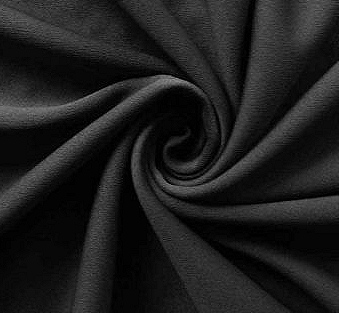
Fabric | Poly Stretch
Poly Stretch 6oz is a soft material commonly used in many commercial and industrial photo applications. It’s a two-way stretch fabric with zero, to minimal wrinkle and it has a flat matte finish. It is commonly used to create backdrop walls for photography of large products like automobiles. 75% Visual blackout, 50% Light blackout. $$

Fabric | Premium Velour
This luxurious 14oz fabric is ideal for stage backdrops, dividing a space or creating a high-end look with fabric. It's inherently flame resistant, lightweight and washable. It's the ideal fabric for commercial curtains that need to look great at a reasonable price. 100% Visual blackout, 90% Light blackout. $$$
Material Options

18 oz Reinforced Vinyl (standard)
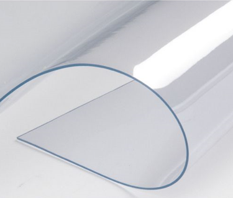
20 mil Clear PVC For Clarity
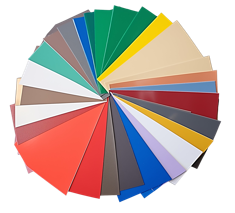
Available in Multiple Colors
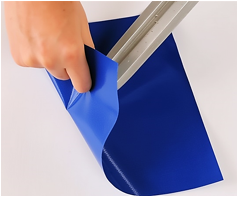
Strong Materials
Why Sound Matters and How Curtain Walls Help
In planetariums and science museums, unwanted noise can disrupt presentations and reduce visitor focus. Curtain walls solve this with layered acoustic materials that absorb echo and block sound between zones. They create quieter, more focused spaces while allowing museums to separate workshops, theaters, and galleries without permanent walls.
| Feature | Permanent Walls | Curtain Wall Systems |
|---|---|---|
| Cost | High (requires full build-out) | Lower (modular installation) |
| Flexibility | Fixed and costly to modify | Reconfigurable and mobile |
| Installation Time | Long and disruptive | Quick, minimal downtime |
| Light Control | Limited | Built-in blackout design |
| Sound Control | Requires separate acoustic panels | Integrated sound-blocking layers |
These benefits are available through several customizable curtain wall solutions designed specifically for large educational and public spaces.
Top Curtain Wall Solutions for Museums and Planetariums
Curtain wall come in several configurations designed to meet the needs of public institutions, planetariums, and science museums. Each option below provides durable performance, professional light and sound control, and the flexibility to adapt spaces without permanent construction.
Insulated Curtain Wall
Built for dependable performance, the Insulated Curtain Wall provides superior sound and temperature regulation. It’s ideal for dividing large rooms where both climate and noise need to stay consistent.
• Multi-layer vinyl and insulated core improve energy efficiency and sound isolation.
• Perfect for separating exhibit halls, workshops, or storage areas.
• Reinforced seams and overhead track systems allow smooth, reliable movement.
• Custom-sized options available for extra-wide or tall enclosures.
Fabric | Poly Stretch
The Poly Stretch Curtain Wall combines flexibility with a sleek, modern look. It’s perfect for multipurpose exhibit spaces that require quick layout changes.
• Lightweight, stretch-resistant fabric moves smoothly on track systems.
• Soft light diffusion keeps public areas visually balanced.
• Available in multiple colors to coordinate with museum branding.
• Easy to reposition for new displays or temporary exhibit zones.
Fabric | Premium Velour
For a refined finish, the Premium Velour Curtain Wall delivers both performance and aesthetic appeal. Its heavy, velour fabric enhances sound absorption and presentation quality.
• Dense weave reduces echo for lectures, domes, and presentation areas.
• Soft, textured surface adds warmth and elegance to public spaces.
• Compatible with standard track systems for quiet, smooth operation.
• Built for durability, easy cleaning, and frequent use in visitor-heavy settings.
Frequently Asked Questions
FAQs – Curtain Walls for Planetariums and Science Museums
Can insulated curtain walls completely block daylight during shows?
Yes. Insulated Curtain Walls use blackout vinyl layers that significantly reduce daylight, helping projection domes and light-sensitive exhibits operate under darker conditions.
How much sound reduction do acoustic curtain walls provide?
Depending on material thickness and layout, acoustic curtain walls can cut ambient noise by 10–15 decibels, ideal for theaters and presentation spaces.
Are these curtain walls fire-retardant and safe for public buildings?
Absolutely. All materials, including vinyl and Premium Velour, meet NFPA-701 fire safety standards for museums, classrooms, and auditoriums.
Can curtain walls match our museum’s color theme or branding?
Yes. Fabric | Poly Stretch and Premium Velour options can be ordered in custom colors or finishes to complement your exhibit branding.
How easy is it to move or reconfigure the panels?
Curtain walls glide on overhead track systems, allowing quick reconfiguration for new layouts, traveling exhibits, or seasonal displays.
What is the average lifespan of these systems in public venues?
With routine care, curtain wall systems typically last 10–15 years. Heavy-duty vinyl and reinforced stitching ensure long-term reliability.
Do insulated curtain walls help control indoor temperature?
Yes. The insulated core keeps air temperatures stable, improving comfort and lowering HVAC costs in domes and exhibit halls.
Can curtain walls be used for temporary science fairs or mobile exhibits?
Definitely. Lightweight, modular panels make setup and teardown fast, perfect for events or traveling educational programs.
Are they suitable for semi-outdoor learning areas?
Yes. Industrial-grade vinyl curtains resist humidity and mild outdoor exposure, offering protection in covered pavilions or open labs.
Do they require special maintenance or cleaning?
No. Wipe panels with mild soap and water, and occasionally check tracks for smooth operation, no specialized cleaning needed.
Can I combine different curtain types within one facility?
Yes. Many institutions pair Insulated Curtain Walls for temperature control with Poly Stretch panels for flexible, aesthetic zones.
Are curtain walls permanent installations?
No. They’re semi-permanent partitions that can be removed or reinstalled anytime without construction work.
What’s the difference between vinyl and fabric curtain walls?
Vinyl models provide stronger blackout and moisture resistance, while fabric options like Poly Stretch and Premium Velour add texture and acoustic performance.
Do curtain walls improve visitor comfort?
Yes. They minimize glare, echo, and noise, helping guests stay focused and relaxed throughout exhibits and shows.
Are they compatible with projector and lighting systems?
They are. Blackout surfaces enhance projection clarity, and track-mounted systems integrate easily with existing lighting.
Can curtain walls work with HVAC vents or ceiling fans?
Yes. Panels can include gaps or seals around ducts to maintain airflow and consistent climate control.
Can these be installed in older or historic buildings?
Yes. Curtain walls are lightweight and require minimal hardware, making them safe for retrofit projects and preservation sites.
What track systems are available for mounting?
Options include ceiling-mounted, suspended, and curved tracks to fit domes or irregular layouts inside museums and theaters.
Do these products meet accessibility and safety codes?
Yes. All systems are designed to comply with public safety, accessibility, and fire-retardant standards for institutional use.
Can individual panels or components be replaced later?
Yes. Each panel and track section can be repaired or swapped independently, extending lifespan and reducing replacement costs.
Build the Perfect Viewing and Learning Space
Curtain walls help planetariums and science museums manage light, sound, and space with precision. They make every exhibit and presentation clearer, quieter, and more immersive while offering the flexibility to adapt layouts without construction. Contact us today to explore curtain wall systems designed for public institutions, planetariums, and science museums.

